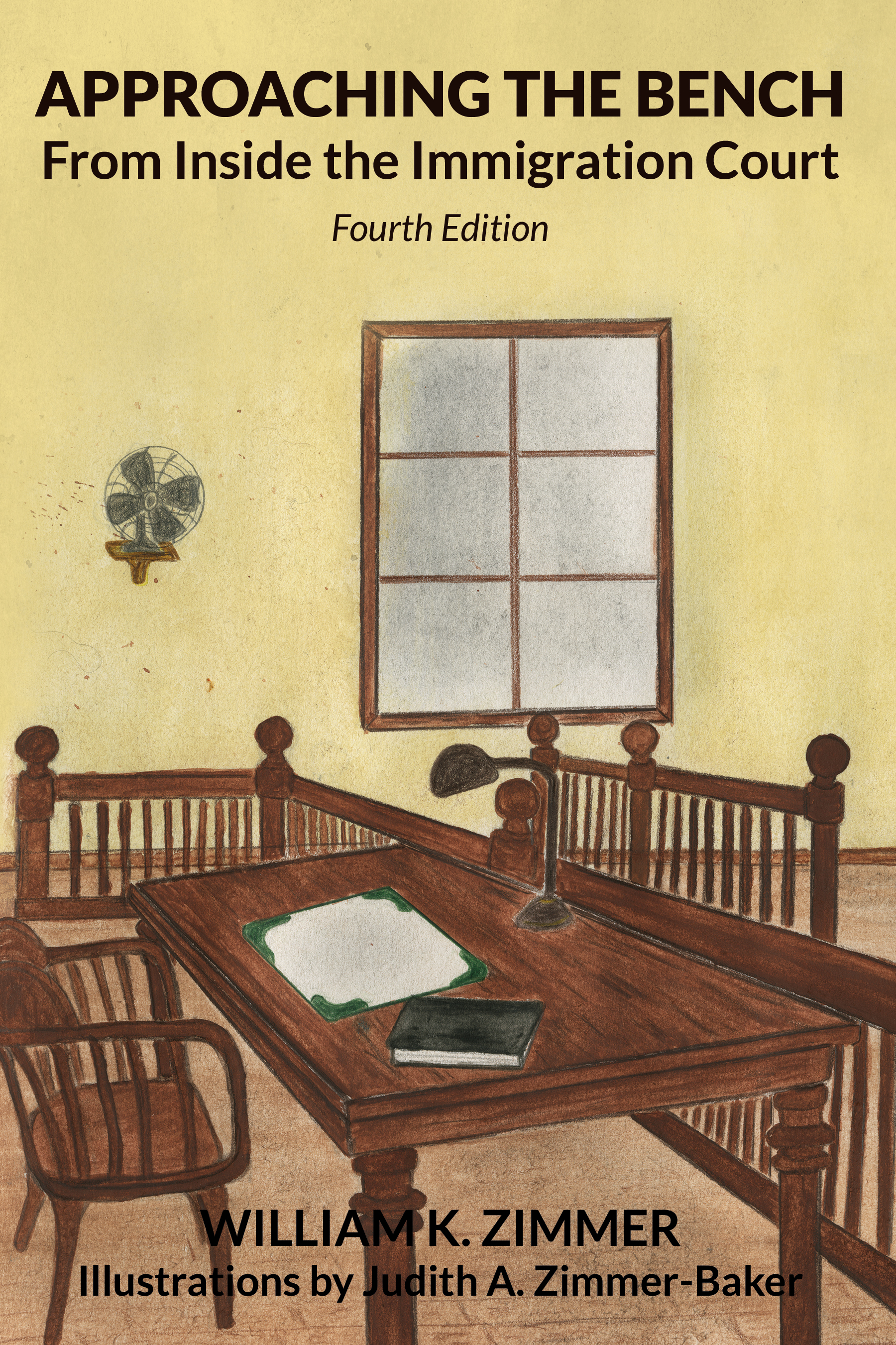Defective NTA is Insufficient Written Notice for the Purpose of Rescinding In Absentia Orders
%20Flooded%20Field.jpg)
On September 27, 2021, the Fifth Circuit Court of Appeal published a decision in which it applied the rationale of Niz-Chavez v. Garland, 141 S. Ct. 1474 (2021) to the criteria for rescission of in absentia orders in accordance with section 240(b)(5)(C)(ii) of the Immigration and Nationality Act, as amended ("the Act"). Marcelo Eugenio Rodriguez, aka Marcelo Rodriguez Andueza v. Garland, (5th Cir. 2021) No. 20-60008.
The procedural history, facts of record, holding and rationale in Marcelo Eugenio Rodriguez, aka Marcelo Rodriguez Andueza v. Garland are as follows:
Case History
On March 12, 2018, an Immigration Judge ordered the Petitioner removed in absentia.
In July 2018, the Petitioner moved to rescind his removal order and reopen removal proceedings pursuant to section 240(b)(5)(C)(ii) of the Act.
The Immigration Judge denied the Petitioner’s motion.
The Petitioner appealed to the Board of Immigration Appeals (“BIA”).
The BIA affirmed the Immigration Judge’s decision and dismissed the appeal.
The Petitioner filed a Petition for Review.
Facts
The Petitioner is a native and citizen of Uruguay who entered the United States with a visitor visa on February 16, 2002.
Upon his marriage to a U.S. citizen in 2014, the Petitioner adjusted his status to conditional permanent resident.
On January 30, 2018, the Department of Homeland Security (“DHS”) served the Petitioner with a notice to appear (“NTA”) in Pasadena, Texas, charging him with removability because he and his wife failed to file a required petition.
The NTA did not contain the time and date of his immigration hearing.
The immigration court subsequently sent a notice of hearing (“NOH”) to the Petitioner’s Pasadena address.
The Petitioner asserted he did not receive the NOH because he had moved to Georgetown, Texas, after separating from his wife.
Therefore, the Petitioner did not appear at his hearing on March 12, 2018, where the immigration judge had ordered him removed in absentia.
Held
Petition granted
BIA decision vacated
Remanded
Rationale
The Petitioner raised two arguments in his petition for review:
- He asserted that he did not receive proper notice pursuant to Pereira v. Sessions, 138 S. Ct. 2105 (2018).
- He argued that he overcame the presumption of receipt for the NOH.
The Fifth Circuit Court of Appeal only addressed the Petitioner’s first argument:
- The United States Supreme Court’s recent decision in Niz-Chavez v. Garland, 141 S. Ct. 1474 (2021) made plain that the notice requirements set forth in section 239(a)(1) of the Act must be included in a single document.
- Although the controversy in Niz-Chavez focused on the stop-time rule, the United States Supreme Court interpreted section 239(a) of the Act separately from the stop-time statute. See Niz-Chavez v. Garland, at 1480.
- The United States Supreme Court held that section 239(a) of the Act “require[s] ‘a’ written notice containing all the required information” and rejected the argument that the requisite notice could be provided by multiple documents. See Niz-Chavez v. Garland, at 1480.
- Both the rescission of an in absentia order provision and the stop-time rule provision specifically reference the notice requirements of section 239(a) of the Act. See sections 240(b)(5)(C)(ii) and 240A(d)(1) of the Act.
- Therefore, the United States Supreme Court’s separate interpretation of the notice requirements of section 239(a) of the Act in Niz-Chavez applies in the in absentia context.
See Marcelo Eugenio Rodriguez, also known as Marcelo Rodriguez Andueza v. Garland, at 3-6.
Commentary
The Fifth Circuit Court of Appeal emphasized that specific textual reference to 239(a) of the Act in the “stop-time” provision of section 240A(d)(1) of the Act and the provision for rescission of an in absentia order in section 240(b)(5)(C)(ii) of the Act distinguishes these provisions from others that have been considered. Marcelo Eugenio Rodriguez, aka Marcelo Rodriguez Andueza v. Garland, at 6.
Thus, it seems that a defective NTA that omits at least any specified information listed in section 239(a)(1)(G)(i) of the Act will fail as "written notice" relating to any provision of the Act as long as a specific textual reference to 239(a) of the Act can be established.
Like flood water that breeches its familiar banks and unexpectedly inundates a formerly dry field, the rationale of Niz-Chavez has flowed from the original application of notice requirements relating to the termination of continuous physical presence in the context of cancellation of removal applications into the requirements for rescinding in absentia orders.
In my experience, in absentia hearings seemed numerous. Consequently, motions to reopen in absentia hearings accounted for a relatively large number of motions filed in immigration court.
In the past, the first challenge for DHS attorneys moving to proceed in absentia was to establish proof of service of the NTA and the NOH to the last address provided by the respondent (i.e. the individual who is the subject of removal proceedings), as required in section 239(a)(1)(F) of the Act. See section 240(b)(5)(A) of the Act. Then, of course, the DHS attorney needed to prove that the respondent was subject to removal. See section 240(b)(5)(A) of the Act.
Moreover, to obtain an in absentia order, the DHS attorney must prove by "clear, unequivocal, and convincing evidence" that written notice had been provided (unless not required under section 240(b)(5)(B) for failure of the respondent to provide address information) and that the allegations and charge(s) on the NTA were true. See section 240(b)(5)(A) of the Act.
To the surprise of some (including Executive Office For Immigration Review (“EOIR”) administrators and bureaucrats) conducting in absentia hearings can consume a significant portion of time for Immigration Judges and DHS attorneys.
In light of Marcelo Eugenio Rodriguez, aka Marcelo Rodriguez Andueza v. Garland, disposing of in absentia cases, at least in the 5th Circuit, could become much less time consuming, because many NTAs lack the time and place of the initial hearing required by section 239(a)(1)(G)(i) of the Act.
The DHS, however, might take the position that the criteria for rescinding an in absentia order is distinct from the threshold criteria for conducting an in absentia hearing. Section 240(b)(5)(A) of the Act states in the disjunctive that failure to appear "after written notice required under paragraph (1) or (2) of section 239(a)" [emphasis added] permits an in absentia procedure. Section 239(a)(1) refers to the NTA and section 239(a)(2) refers to the NOH.
If the DHS uses this reasoning some Immigration Judges might continue to issue in absentia orders which will be easy to rescind, but the subjects of such in absentia orders would need to file a motion to reopen.
My preference, while on the bench in Miami, Florida and Houston, Texas, was to conduct in absentia hearings immediately after completing master calendar hearings for respondents who had made personal appearances. Some Immigration Judges would postpone the in absentia hearings to another day, but this action necessarily requires new NOHs and the possibility of unforeseen need for future resets and additional issues relating to multiple NOHs. In my opinion, simpler is better.
Readers who are unfamiliar with the phrase, “master calendar,” might benefit from a description of removal proceedings.
One way to describe a removal proceeding is to compare it to a criminal trial. Criminal trials are divided into two parts; the guilt phase and the punishment phase. Removal proceedings are also divided into two parts. In the first part, the Immigration Judge will determine whether the DHS allegations are true and support the removal charge and whether the removal charge can be sustained. In the second part of removal proceedings, the respondent, whom the DHS has proven to be a removable alien, has the right to apply for relief from removal. Relief from removal usually takes the form of one or more applications to legitimate immigration status permanently or temporarily to avoid removal.
During the course of a removal hearing, the respondent is entitled to a reasonable opportunity to obtain legal counsel at no expense to the federal government. This is not an absolute right to counsel. See Vides-Vides v. INS, 783 F.3d 1463, at 1469 (9th Cir. 1986). The respondent also has the right to review and object to DHS evidence (except evidence involving the national security of the United States), to submit testimony and evidence and cross-examine witnesses. See generally, section 240(b)(4) of the Act. Removal proceedings are generally open to the public. See 8 C.F.R. § 1240.10(b).
The very first hearing in removal proceedings is described as a master calendar hearing. At that first master calendar hearing, the Immigration Judge will inform the respondent about the right to representation at no expense to the government, and provide a legal aid list of pro bono organizations in the city where the hearing is being conducted. In addition, the Immigration Judge will inform the respondent about the nature of removal proceedings and the respondent’s rights in such proceedings. This involves describing in plain language the basic structure of removal proceedings, the allegations and removal charge(s), the respondent’s rights, and making certain that the respondent understands. See 8 C.F.R. § 1240.10.
The Immigration Judge will explain or provide written notice that if the respondent fails to appear at a removal hearing without exceptional circumstances outside of the respondent’s control the respondent will be ordered removed from the United States in the respondent’s absence. As discussed above, a removal hearing conducted in the respondent’s absence is known as an in absentia hearing. The Immigration Judge will inform the respondent that if a removal order is issued in an in absentia hearing the respondent will become ineligible for a period of 10 years for voluntary departure, adjustment of status, cancellation of removal and an application known as registry. See section 240(b)(7) of the Act. This responsibility makes it very important for an Immigration Judge to be patient and strive to be a good communicator. A judicial temperament is sometimes more important than legal acumen, but hopefully these traits will go hand in hand.
Usually, another master calendar hearing is scheduled to allow time for the respondent to consult and hire legal counsel if requested by the respondent. Law and regulations obligate the Immigration Judge to inform the respondent at some time during immigration proceedings about apparent eligibility for relief from removal. Matter of Cordova, 22 I&N Dec. 966, at 968 (BIA 1999). Even if the respondent is represented, Immigration Judges often engage the respondent’s representative in a brief discussion about potential relief applications before scheduling a hearing on the merits of relief from removal.
The second part of removal proceedings is often described as a merits hearing or an individual hearing. At the conclusion of the merits hearing, the Immigration Judge will typically issue an oral decision containing findings of fact and conclusions of law and an order disposing of the respondent's relief applications. See Matter of S-H-, 23 I&N Dec. 462 (BIA 2002); Matter of Rodriguez-Carrillo, 22 I&N Dec. 1031 (BIA 1999).
Hopefully, this brief summary of removal proceedings will provide clarity for those who are unfamiliar with immigration court proceedings.

